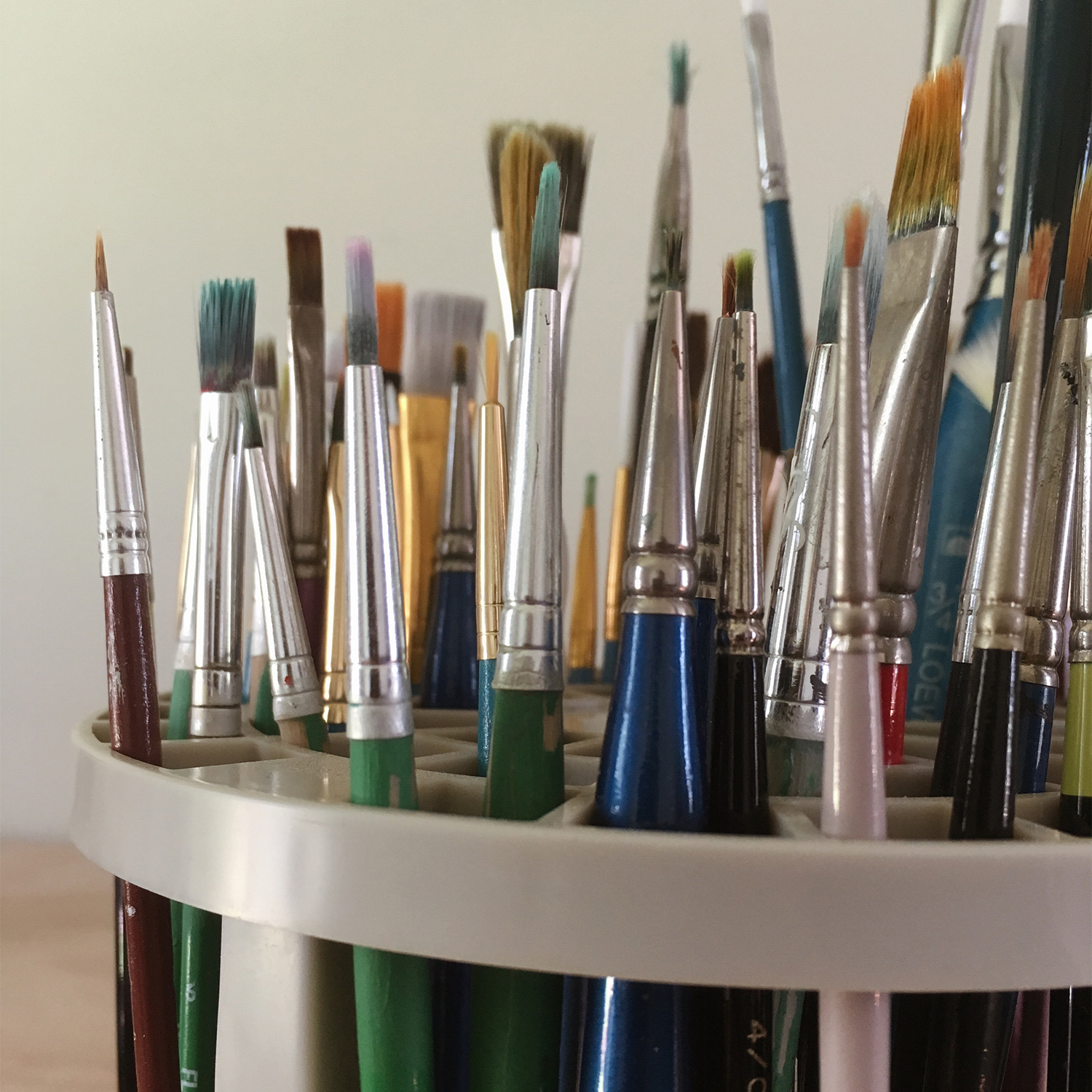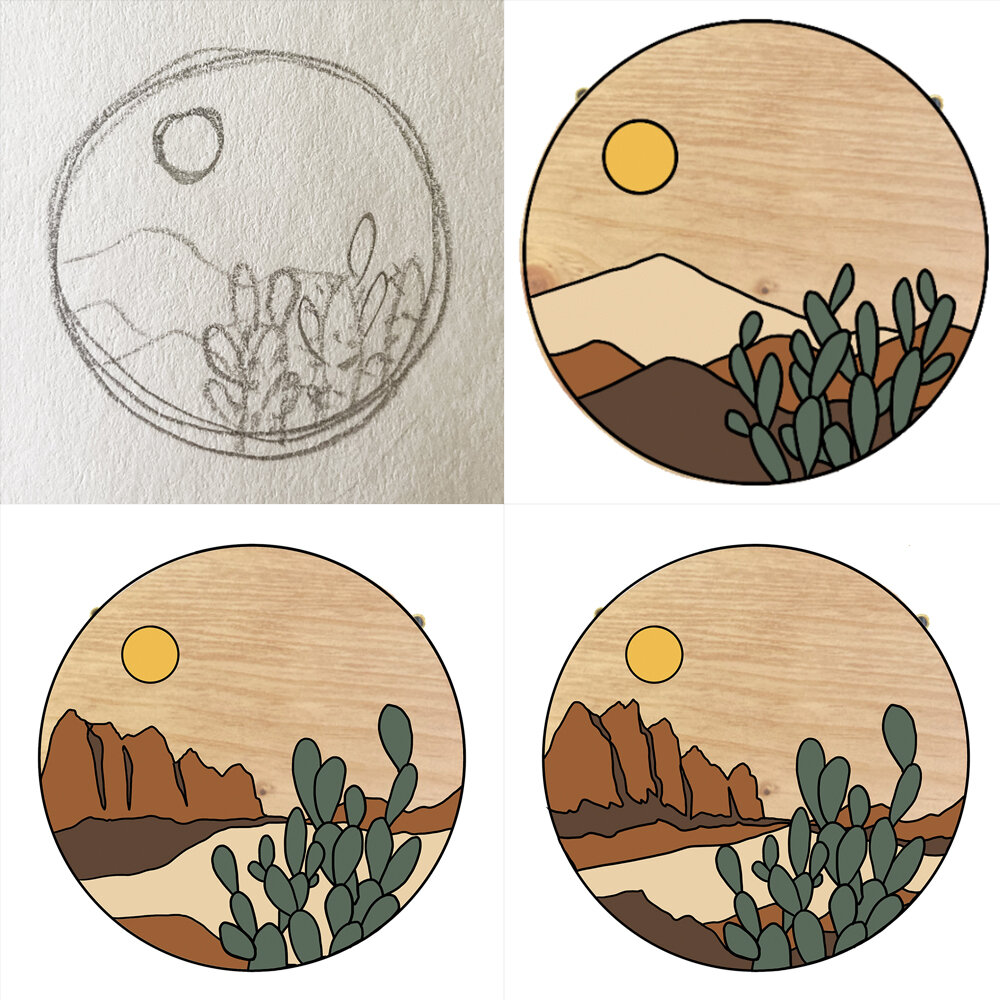How to Navigate the Paint Brush Aisle
If you want to enjoy painting and building your skills as a painter, it’s so important to use quality brushes. Even though painting well takes practice, you are much more likely to improve and enjoy the process if you have good tools to work with.
Do you already have a few go-to paint brushes that you absolutely love to use? If not, maybe it’s time for a shopping trip!
If you’re not sure what you should be looking for though, the brush aisle at your local art supply store can be very overwhelming. You’ll probably see brushes with several bristle types in all kinds of sizes and shapes, and with different handle shapes and lengths. On top of that, some individual brushes can cost you up to $10 or more while you can get a huge multipack for the same price.
If you’re already feeling stressed, keep reading! In this post I’m going to cover the need-to-know basics of brush shopping so you can walk away with a small collection of the best brushes you’ve ever owned. I’ll tell you about which sections of the brush aisle to focus on and which to avoid, and I’ll share my three favorite brushes that I use on a daily basis.
* This post covers brushes for watercolor and acrylic painting, not oils.
My entire brush collection of 20+ years! My most frequently used brushes are in the smaller jar.
BRISTLE TYPES
The first thing you will often notice when entering a brush aisle is that it’s broken down into sections based on medium. You will usually see brushes for oil painting, watercolor, and acrylics. If you’re in a larger art store like Blick, these sections may even have their own separate aisles.
So what’s the difference? The bristles on the brushes in each section are made from different materials that pair best with each medium. Oil brushes are often made from natural bristles, watercolor brushes can be natural or synthetic, and acrylic brushes are usually all synthetic.
If you want to experiment with a variety of mediums, I recommend synthetic brushes. You can use them for almost any medium including watercolors, gouache, inks, and acrylics, and they are durable and long-lasting. All of my favorites that I use for my paintings and wood art are synthetic brushes.
These brushes may be in the acrylic aisle, or maybe between the watercolor and acrylic sections. You might also see them labeled as nylon or taklon brushes, or in a section marked for use with both watercolor and acrylic.
COST
Now that you’re only looking at a smaller section of brush aisle, you probably see a display with individual brushes, and then some probably a selection of (usually) more affordable multipacks.
My number one tip for brush shopping is DO NOT choose based on lowest cost. With paint brushes, you absolutely get what you pay for. If you buy the cheapest ones, you’ll waste time and get frustrated when you’re picking bristles out of your paintings and dealing with loose ferrules (metal piece that holds the bristles and attaches to the rest of the brush handle) that wobble back and forth as you try to paint. It’s not worth the few pennies or dollars you might have saved.
In my experience, the individually sold brushes are the best quality, which is why I almost always buy brushes individually. Not every multipack is terrible, it can be tough to pick out the good ones from the not so good ones without some experience. They will usually be more expensive than multipack brushes, but it’s worth it. Most of my best brushes cost between $3 and $10, so while they are expensive in comparison to bulk packs, they’re really not too bad. Just remember to take a close look at the bristles before you checkout to make sure they haven’t been damaged while being displayed out in the open.
SHAPES & SIZES
Now that you know to stay far, far away from the super cheap brushes, let’s talk about shapes and sizes.
SHAPES - You can usually find the name of a brush’s shape printed on the handle. There are many shapes, and while there may be some situations where it’s helpful to have a dagger striper (not made up) in your collection, it’s not at all necessary to own every shape that’s available.
99% of the time, I use ROUND BRUSHES and SPOTTER BRUSHES for my paintings. Spotter brushes are sometimes also called pointed round brushes. These shapes are extremely versatile and can paint large areas as well as fine details. (see some examples of how you can paint with each brush in the photos below)
SIZES - Each brush shape also comes in several sizes. These sizes are usually shown as a number printed on the handle closest to the metal ferrule. Sizing isn’t too complicated, bigger numbers equal bigger brushes. Size 0 is not the smallest though; below zero there is 00, then 000 and so on. 5/0 means five zeros, and 18/0 means 18 zeros. It’s not a standardized system, but I’ve found sizing to be fairly consistent across brands. It can still be good to buy in person versus online though if you don’t want any big surprises.
To give you a better idea of how some of these sizes and shapes compare, here are some examples of some of my most-used brushes and how they paint with watercolors and acrylics.
My favorite watercolor brushes are on the left and acrylic is on the right. Notice that I use several of the brushes for both mediums, and that bigger sizes doesn’t always equal bigger brush strokes. Sometimes a larger brush with a pointed tip (like the size 0 spotter) can paint a line that is just as fine as the much smaller round brushes.
Here is a set of three brushes that would make a great starter set for anyone who wants to start painting. They are a #0 spotter, a #3 round, and a 5/0 round. I use these three brushes to paint everything from art prints to wood art to leaves in watercolors and acrylics.
Three of my most often used brushes
HANDLES
One last consideration when you are shopping for brushes is the handle. Brush handles can vary widely in length and thickness. Some are made from wood, and some from plastic or acrylic, and some even have an ergonomic shape or a grip attached.
I recommend shorter handled brushes if you plan to pack them for traveling or plein air painting, but for all other purposes the handle size and style that you choose is totally up to what you like and what feels best in your hand. While you’re shopping, hold a few brushes as if you were going to paint and see how they feel.
That’s it! Now you know the difference between each brush section in your art store and where you should focus, where to find the good quality brushes, the best shapes and sizes for starting your collection, and that you can pick any kind of handle you want!
I hope this guide will clear up any frustration you may have had when before when trying to shop for painting supplies and help motivate you to go get some brushes and start painting!
Happy Shopping!

















